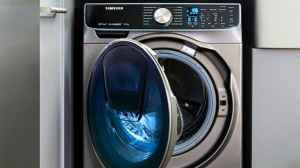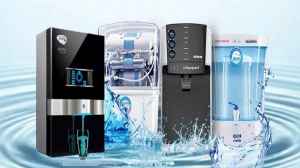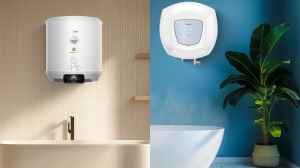A water purifier is an important home solution that helps remove harmful substances from water, making it safe to drink. Clean drinking water is necessary for good health, and using a water purifier ensures you and your family avoid waterborne diseases. When choosing a water purifier, two common types are RO and UV, each with different features and benefits. Understanding these can help you pick the right one for your home.
RO (Reverse Osmosis) purifiers use a special membrane to remove dissolved salts, heavy metals, chemicals, and other impurities from water. This makes them ideal for hard water or water from borewells and tankers, which often have higher levels of contamination. RO purifiers also improve the taste of water by removing unwanted substances. They tend to use more electricity and need regular filter changes, but are durable and effective for tough water conditions.
UV (Ultraviolet) purifiers use UV light to kill bacteria, viruses, and other germs in the water. They do not remove dissolved solids like salts or chemicals, but are great for water that is already clean, such as municipal or tap water. UV purifiers use less power and require less maintenance compared to RO systems, making them cost-effective and reliable for many homes.
Many water purifiers now come with features like filter life indicators, automatic shut-off, and app controls to make maintenance easier. Choosing between RO and UV depends on your water quality, budget, and needs, and you can get it from the home solutions and electronics category. Durability and proper servicing are also important to ensure your purifier works well for years. By understanding the differences, you can pick the best water purifier that fits your home and keeps your family healthy.
Which Water Purifier is Best for Your Water Quality: RO or UV?
Choosing between RO and UV depends on your water quality. If your water has salts or chemicals, go for RO. If the water is mostly clean, UV is enough. Pick the one that best fits your home needs and keeps your family safe.
Loading...
Factors to Consider When Choosing a Water Purifier?
Choosing the right water purifier is important to keep your drinking water safe and healthy. There are a few simple things you should check before buying one for your home.
Key Features:
- Water Source: Know if your water comes from a borewell, tanker, or municipal supply. RO is better for hard or salty water, and UV works well for cleaner water.
- TDS Level: Test the TDS (Total Dissolved Solids) in your water. If it’s above 200 ppm, go for an RO purifier.
- Purification Technology: Choose between RO, UV, UF, or a combination based on the impurities in your water.
- Storage Capacity: Check the tank size. A 7–10L tank is good for most families to ensure water is always available.
- Maintenance & Service: Go for brands with good after-sales service. Some models offer 1–2 years of free service and filter replacements.
- Power Consumption: UV purifiers use less electricity than RO. If saving power is important, this can help with your decision.
- Filter Life: Choose a purifier with long-lasting filters and filter change alerts for easy maintenance.
- Budget: Pick a purifier that fits your budget but still meets your water safety needs.
- Build Quality: Make sure the purifier is made of food-grade plastic and is durable for long use.
By checking your water source, TDS level, and daily needs, you can choose the right water purifier for your home. A good purifier is a simple and smart home solution to keep your family healthy.
Read More: Aquaguard Water Purifier Latest Models In 2025
Disclaimer: At HerZindagi, we prioritize providing the up-to-date information on the latest trending commodities and goods. This Article is written and vetted by our in-house category authors in sync with the Google guidelines on product reviews and shoppable content. HerZindagi is in an associate partnership, so we may earn a part of the revenue when you make a purchase. We shall not be liable for any claim under applicable laws, including but not limited to the Consumer Protection Act, 2019, concerning the products. The products listed in this article are in no particular order of priority.
Loading...



